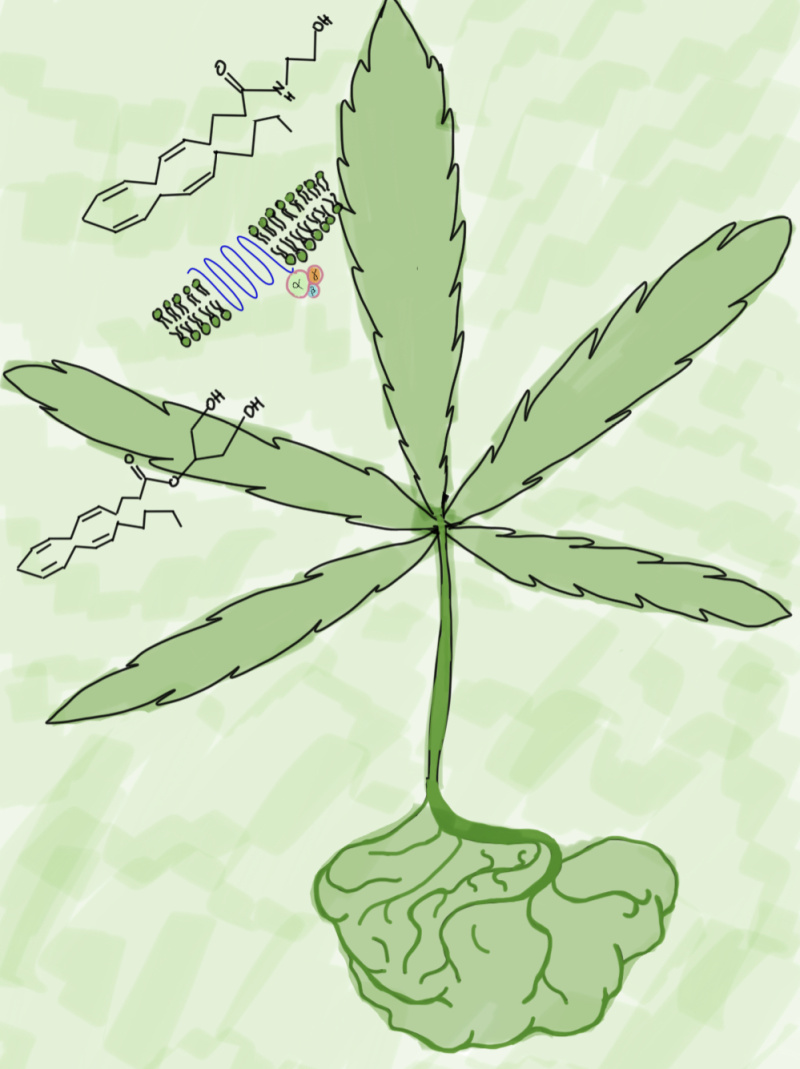What Are Endocannabinoids?
Endocannabinoids are naturally occurring molecules that are similar in structure to the active compounds in cannabis. These molecules are produced by the body and interact with the same receptors as THC, the main psychoactive compound in cannabis.
Structure
There are two main endocannabinoids: anandamide (AEA) and 2-arachidonoylglycerol (2-AG). Anandamide has a chemical structure consisting of an ethanolamine head group, an arachidonic acid chain, and an amide bond linking them together. 2-AG, on the other hand, consists of a glycerol backbone with two arachidonic acid chains attached to it via ester bonds. Both endocannabinoids are synthesized on demand from membrane phospholipids and are rapidly metabolized to terminate their signaling effects.

Receptors
The two main receptors that are relevant to endocannabinoids are CB1 receptors and CB2 receptors. CB1 receptors are primarily found in the brain and central nervous system, while CB2 receptors are primarily found in immune cells and peripheral tissues.
Endocannabinoids, such as anandamide and 2-arachidonoylglycerol (2-AG), bind to these receptors to regulate various physiological processes, including pain, appetite, mood, and inflammation. CB1 receptor activation is associated with the psychoactive effects of cannabis, while CB2 receptor activation is associated with anti-inflammatory effects.
Research has also shown that there are other receptors that can interact with endocannabinoids, such as TRPV1 receptors and GPR55 receptors. These receptors may have additional roles in mediating the effects of endocannabinoids in the body.
Signaling Pathways
CB1 and CB2, are G protein-coupled receptors (GPCRs) that are located throughout the body. When endocannabinoids bind to these receptors, they initiate a signaling cascade that leads to various physiological effects.
When an endocannabinoid binds to a CB1 receptor, it activates a G protein that can lead to the inhibition of adenylyl cyclase, which in turn reduces the production of cyclic adenosine monophosphate (cAMP). This leads to a decrease in the activity of intracellular enzymes such as protein kinase A (PKA) and mitogen-activated protein kinases (MAPKs), which ultimately results in the inhibition of neurotransmitter release from presynaptic neurons.
In addition, CB1 receptor activation can also lead to the activation of ion channels such as inwardly rectifying potassium (K+) channels and voltage-gated calcium (Ca2+) channels. This can result in the hyperpolarization of the postsynaptic membrane and a decrease in the excitability of neurons.
On the other hand, when an endocannabinoid binds to a CB2 receptor, it can activate several signaling pathways, including the inhibition of adenylyl cyclase and the activation of PI3K/Akt and MAPK signaling cascades. CB2 receptor activation can also lead to the inhibition of intracellular calcium release and the activation of potassium channels, which can contribute to the anti-inflammatory and immunomodulatory effects of endocannabinoids.
Endocannabinoids in Neurodegenerative Disease
The paper discussed in class highlights the potential roles of cannabinoid receptors in various diseases of the central nervous system (CNS). The authors describe the potential therapeutic benefits of targeting these receptors for the treatment of neurodegenerative diseases such as Alzheimer’s, Parkinson’s, and Huntington’s disease.
The authors describe the endocannabinoid system as a key regulator of neurotransmitter release, synaptic plasticity, and immune function in the CNS. They discuss the role of CB1 receptors in regulating the release of neurotransmitters such as glutamate, GABA, and dopamine, and the potential therapeutic benefits of CB1 agonists in modulating these pathways.
The authors also describe the potential therapeutic benefits of CB2 receptor activation in the treatment of neuroinflammatory and neurodegenerative diseases, as well as pain and psychiatric disorders. They discuss the anti-inflammatory and immunomodulatory effects of CB2 receptor activation, as well as its potential role in regulating microglial activation and neurogenesis.
